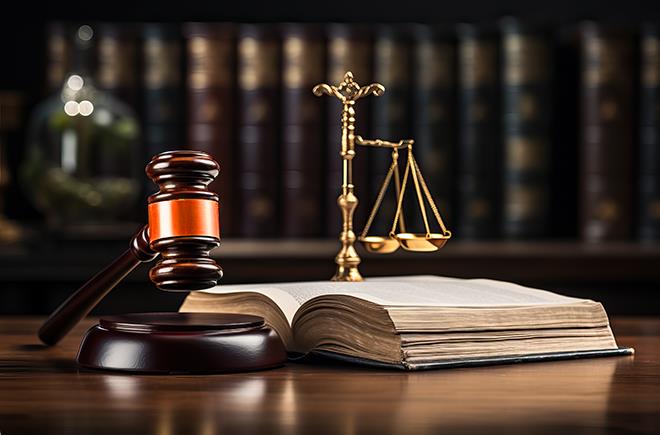Environmental Issues in Bankruptcy: Reconciling the Conflicting Goals of Bankruptcy and Environmental Laws
Pre- vs. Post-Petition Claims, Enforcement Actions, Statutory Super Liens, Asset Sales, Abandonment

Course Details
- smart_display Format
On-Demand
- signal_cellular_alt Difficulty Level
Intermediate
- work Practice Area
Environmental
- event Date
Wednesday, September 13, 2023
- schedule Time
1:00 p.m. ET./10:00 a.m. PT
- timer Program Length
90 minutes
-
This 90-minute webinar is eligible in most states for 1.5 CLE credits.
This CLE course will investigate the conflicts between the Bankruptcy Code and state and federal environmental statutes and provide counsel with an understanding of how to resolve these issues in bankruptcy proceedings. The panel will review relevant court decisions and why some environmental claims receive special treatment in bankruptcy.
Faculty

Throughout his practice, Mr. Rigano has represented key constituents in Chapter 7 and 11 bankruptcy cases, including trustees, debtors, committees, secured creditors, factors, landlords, trade creditors and defendants in Chapter 5 bankruptcy actions. His practice also includes the representation of clients with a variety of environmental issues, including subsurface contamination, solid waste, and cost recovery issues. He authored numerous articles published in Bloomberg Bankruptcy Law Reporter, Wall Street Journal Bankruptcy Pro, the American Bankruptcy Institute Law Review and the New York Real Estate Journal. He has lectured extensively on various bankruptcy and litigation topics.

Drawing on his expertise in environmental health, Mr. Tarantino’s practice focuses on environmental and consumer protection law, with an emphasis on hazardous substances, mass torts, and consumer product safety. He has argued motions in state and federal courts for a variety of complex litigation matters, including product liability and mass tort claims, California’s Unfair Competition Law actions, and environmental contamination disputes. He has successfully led clients through private mediations and arbitrations and has significant experience in California state and federal appellate courts. Mr. Tarantino is a frequent author and lecturer on environmental and consumer law topics.

Mr. Otis provides strategic, insightful and cost-effective solutions to address the environmental remediation, permitting, compliance, climate change, and environmental, social and governance (ESG) needs of clients across a range of industries, including in the commodity trading, mining, energy and insurance sectors. He helps clients address and mitigate environmental risks; advises on cleanups and compliance; counsels on environmental issues in domestic and cross-border mergers and acquisitions, financings, and real estate developments; and represents clients in international arbitrations involving environmental claims outside the United States. Mr. Otis also guides clients in navigating ESG policy development and reporting under the ever-evolving ESG disclosure standards and advises clients in the greenhouse gas emissions trading markets.
Description
The Bankruptcy Code frequently conflicts with state and federal environmental laws in the administration of a bankruptcy case. The goal in bankruptcy proceedings is to give a debtor a "fresh start" by identifying the debtor's assets and liabilities to enable the debtor to discharge and pay outstanding claims under the priorities established in the Bankruptcy Code that will allow the debtor to reorganize or in some cases liquidate.
In contrast, the "polluter pay" policy of environmental laws requires remediation of environmental contamination, often over an extended period and with ultimate remediation costs not yet determined, with the expense and responsibility of cleanup allocated among potentially responsible parties (PRPs).
PRP claims and government enforcement actions receive differing treatment in bankruptcy. Some obligations and claims may be discharged, while some may survive depending on when the claim arises, the existence of statutory or super liens, public health, the status of ongoing remediation, and other considerations.
Environmental obligations also impact the debtor's ability to conduct a 363 asset sale and abandon the contaminated property. Counsel must understand how environmental issues impact these bankruptcy rights.
Listen as our authoritative panel examines the conflicts between environmental law and bankruptcy law and how various environmental obligations and claims are treated in bankruptcy. The panel will review court decisions and provide an analysis of relevant Bankruptcy Code provisions to explain how cost recovery, contribution, remediation, and other actions are evaluated in bankruptcy. The panel will also discuss pre-petition vs. post-petition claims, enforcement actions that can trump the automatic stay, the effect of super lien statutes, environmental reserves, and other ways that environmental claims can uniquely impact bankruptcy proceedings.
Outline
- Introduction
- The interplay of the Bankruptcy Code and environmental statutes
- Treatment of environmental liabilities under Bankruptcy Code
- Environmental obligations and claims in bankruptcy
- Dischargeability of environmental obligations and claims under Chapter 11
- Treatment of post-petition environmental cleanup as an administrative expense (28 U.S.C. 959(b))
- Estimating and discharging contingent environmental claims
- Sales of contaminated assets through bankruptcy
- Case studies
- Sale of real property
- Recovering costs from a non-viable entity
- Structuring settlements with multiple parties
Benefits
The panel will review these and other key issues:
- When are environmental claims dischargeable in bankruptcy, and what are the limitations?
- What kinds of governmental actions are not impacted by the automatic stay?
- When are post-petition cleanup expenses treated as first priority administrative expenses?
- How are contingent environmental claims for contribution or cost recovery claims addressed in bankruptcy?
- Can the bankrupt debtor sell or abandon contaminated assets?
- How do governmental agencies with outstanding cleanup orders and environmental claims influence the outcome of the bankruptcy case?
- Due diligence considerations for a sale of assets in bankruptcy proceedings
- Drafting and negotiating tips
Related Courses

Microplastics Regulation and Litigation: Emerging Trends, Significant Cases, Key Takeaways
Monday, February 24, 2025
1:00 p.m. ET./10:00 a.m. PT
Recommended Resources
Transforming CLE from a Requirement to a Career Advantage
- Learning & Development
- Career Advancement
- Talent Development
How to Build a Standout Personal Brand Without Sacrificing Billable Hours
- Career Advancement


